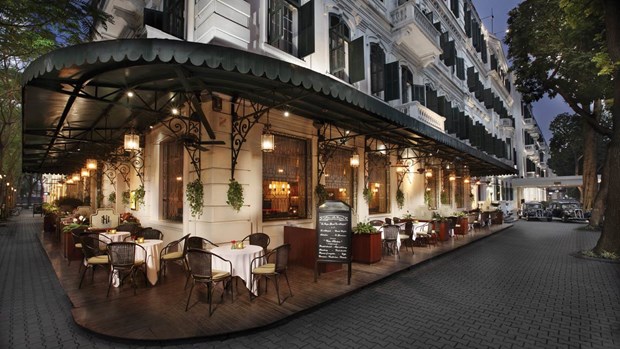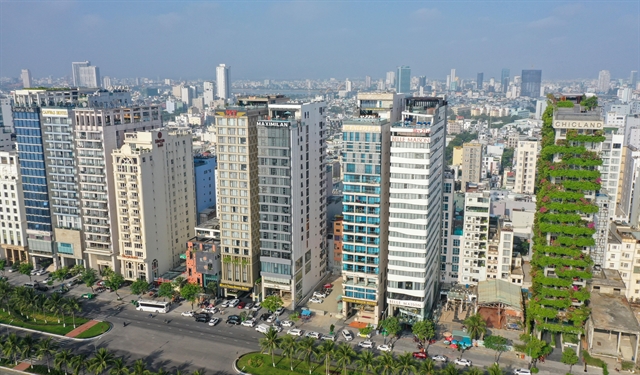 Economy
Economy

 |
| Beachfront hotels in Đà Nẵng City. — VNA/VNS Photo |
HCM CITY — The hotel market is experiencing impressive growth with significant Revenue Per Available Room improvements, according to hospitality advisory and investment Savills Hotels.
In the first seven months of the year, the RevPAR index surged by 15 per cent compared to the same period last year, among the strongest growth rates in Southeast Asia.
This has been primarily fuelled by a sharp increase in occupancy rates.
The recovery in occupancy rates is particularly strong at popular beach destinations such as Nha Trang-Cam Ranh and Phú Quốc, where they have been 40-50 per cent, driven by a big rebound in international tourist arrivals.
But despite the higher occupancy, average room rates remain 3 per cent lower compared to last year, largely due to softer rates in key markets like Nha Trang and Phú Quốc, where properties that opened post-pandemic are still working to establish their market presence.
Mauro Gasparotti, director of Savills Hotels, said: "Competition among properties will be fierce again, and hotels are beginning to look to 2025 as a year to rebuild margins. As a result of market maturity and the desire to gain a competitive advantage, we are starting to see increased interest from owners in rebranding their properties and repositioning to higher tiers.”
Recent years have seen an increase in hotel management brand conversions, with 2022-23 marking a peak with new hotel openings in the midscale segment and above at 52 per cent of new branded openings, he said.
This trend is expected to continue, with 30 per cent of new branded openings in 2024 anticipated to be conversion properties, he said.
“The first wave of branded hotel development in Việt Nam began in 2008-10, with several developers signing hotel management agreements with international hotel operators to secure a brand.
“Since a typical contract lasts 10 to 15 years, many of these management agreements are now nearing expiration. More developers will be able to renew their contracts or find alternatives, especially if renovations are needed, and there is potential for rebranding to higher-tier brands.
“Since the market is now more mature than 10 years ago, operators are more willing to upgrade their brand offerings if the property’s quality meets their standards. As a result, we will likely see more hotels changing brands.”
Uyên Nguyễn, head of consultancy at Savills Hotels, said: “Some projects are collaborating with operators to revitalise long-stalled developments and refresh their branding.
“This includes major projects in Đà Nẵng and Hà Nội that are restarting construction and proposing international brand cooperations.
“Additionally, after years of operation, certain properties are considering upgrading within the same brand portfolio of hotel operators to align with market maturity.”
Brand cooperation extends to the residential sector, where developers seek to provide elevated product quality under the branded residence concept, she said.
Gasparotti said: “Branded residences, whether in beachfront villas or urban luxury condominiums, are becoming a popular choice globally for developers and buyers. Hospitality services and brand construction standards are believed to add value to residents through enhanced services and increased trust.”
In Việt Nam, six projects under development could be considered ultra-luxury branded residences, he said.
Following the handover of Marriott Grand Marina Saigon and The Ritz-Carlton Hanoi, the recent announcement of the launch of Nobu Residences in Đà Nẵng, Mandarin Oriental Residences in Phú Yên and Đà Nẵng demonstrates continued interest, he said.
With the recovery of international tourism, Việt Nam has also experienced a resumption in hotel and resort development, he said.
In the Asia Pacific region (excluding China), Việt Nam is second in the pipeline behind only India.
It boasts 191 projects with 49,800 rooms under construction by 2028, making it a significant player in the region’s hotel development landscape. Nearly three-quarters of the projects fall within the midscale to upscale segment, and nearly 70 per cent are chain-branded.
“The ultra-luxury segment is expected to grow exponentially, doubling its base of seven properties. All these properties are associated with long-standing international brands.
“Currently the majority of luxury and ultra-luxury properties are concentrated in HCM City, Hà Nội and Phú Quốc, representing 50 per cent of the total luxury properties in Việt Nam.
“In the next four years the market also anticipates an increased presence of luxury properties in emerging destinations such as Phú Yên, Sa Pa, Ninh Binh, and Vĩnh Phúc. These destinations are ideal for luxury travellers for their rich cultural heritage, scenic landscapes, and captivating coastlines." —VNS




